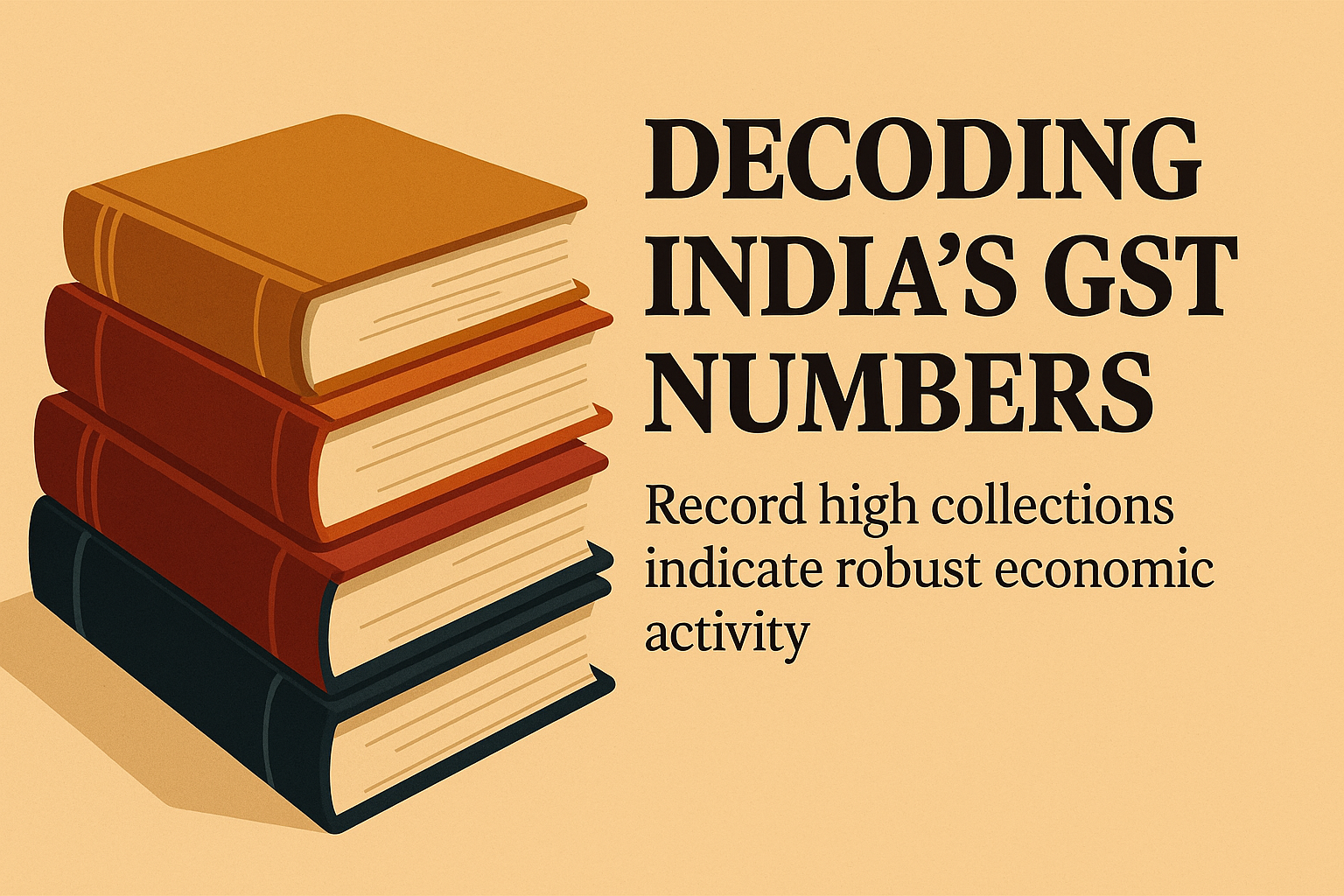
India recorded its highest-ever monthly Goods and Services Tax (GST) collections in April 2025, with revenues reaching ₹2.36 lakh crore—a year-on-year growth of 12.6%.
The figure reflects transactions made in March, the final month of the 2024–25 financial year, a period typically associated with intensified business activity due to annual reconciliations and stock clearances. This year, the pattern was further shaped by strong domestic consumption and a sharp increase in import volumes, particularly linked to export demand.
What’s Driving the Growth?
Multiple structural and cyclical factors have contributed to the record numbers.
Domestic GST collections rose by over 9%, pointing to continued resilience in consumption and production activity. This trend aligns with broader signs of recovery in both rural and urban demand. GST collected on imports surged by 20.8%. This growth is linked to higher export volumes and anticipation of new US tariffs, prompting Indian exporters to advance shipments before reciprocal trade duties came into force.
An expanding tax base also played a key role. More than 2.5 million new GST registrations were recorded in FY25, bringing the total to 15 million. Uttar Pradesh, Maharashtra, Gujarat, Karnataka, and Tamil Nadu now each account for over a million registered taxpayers each. Maharashtra leads in absolute collections, while Uttar Pradesh has the highest number of registrations.
Efforts to improve compliance and enforcement have further contributed. Crackdowns on fake input tax credit claims, nudges for timely filings, and faster refund processing have made the system more efficient and transparent. Exporters have reported eased liquidity pressures as refunds are disbursed more quickly.
Collections also improved across states. Key producing and consuming states posted growth rates between 11% and 16%, reflecting a more balanced spread of economic activity than in previous months.
An tax expert said the record collections were largely driven by year-end reconciliations and pointed to healthy economic activity.
Another tax expert said the milestone reflected “a strong economic performance in the last month of the previous fiscal year.” He added that “the trend of increase in refunds observable during the past few months has continued” and that collections have been “uniformly high in all the major producing/consuming states… in the range 11% to 16%.” He also pointed out that more than five states now have over 10 lakh GST registrations, out of a total of 1.5 crore nationwide.
Another tax expert, pointed to growing disparities between state and central GST collections, citing Tamil Nadu where state GST rose by 17% while the Centre’s share grew 9.3%.
Another tax expert, said the record figures “underscore the Indian economy’s underlying strength amid global uncertainties.” He linked the rise in revenue to export activity, including to the US ahead of the proposed tariffs, and noted the government’s efforts to speed up refund processes. While he expects some moderation in the coming months, he believes the outlook remains positive due to emerging manufacturing opportunities.
Another tax expert, said the 9.9% growth in domestic collections and the 20.8% rise in import-based GST were “led by the export growth as visible by the significantly higher export refunds.” He said the higher number of registrants suggests a broadening of the tax base that should support future collections.
The Road Ahead
Although April’s collections offer a strong start to FY26, analysts are cautious about projecting similar growth through the year. Trade volatility, pending GST rate revisions—especially for sectors like health and life insurance—and geopolitical uncertainty could affect future trends.
Arvind Shrivastava has taken charge as the revenue secretary amid these developments. A 1994-batch IAS officer from the Karnataka cadre, Shrivastava now oversees the task of maintaining revenue momentum while advancing the long-awaited GST rate rationalisation.
He is also expected to manage the transition to a new income tax framework and oversee the phasing out of the GST compensation cess, set to end in March 2026. The cess currently forms a key component of GST revenue.
Source from: https://www.cnbctv18.com/economy/india-record-high-gst-collections-decoded-an-explainer-ws-l-19597630.htm